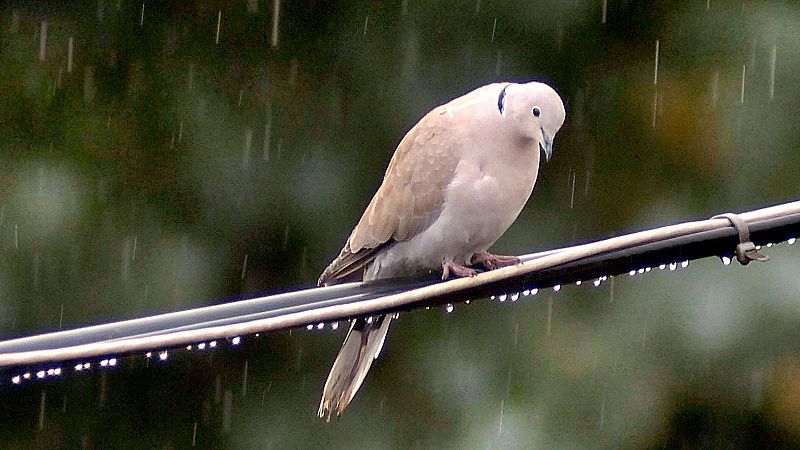
Turtle doves returning to Europe this spring face a less hospitable welcome, as the EU has just voted to let hunters resume shooting the birds.
The species - which migrates from sub-Saharan Africa to Europe every year - has benefited from a hunting ban since 2021, helping its western European population increase by 40 per cent.
European hunters argue this means the birds are fair game again, and EU leaders agreed on Tuesday (1 April) that conditions have been met to permit a sustainable level of shooting.
For conservationists, the success of the hunting ban is a reason to maintain it. Turtle doves, a member of the pigeon and dove family, are still vulnerable to extinction globally, according to the International Union for Conservation of Nature (IUCN).
“The turtle dove did its part. Left alone, it started to recover. But governments failed to uphold their end of the deal,” says Barbara Herrero, the senior nature conservation policy officer at BirdLife Europe.
A bird renowned for its loyalty - turtle doves mate for life, and so often feature in wedding readings - is being let down by human partners, in other words.
“Instead of fixing weak enforcement and protecting habitats, they’re rushing to lift the ban,” Herrero adds. “This is reckless and shortsighted. We know where this path leads - straight back to the brink. The European Commission should have stood firm and kept the moratorium.”
How many turtle doves can be shot under the new rules?
Turtle doves take two aerial routes into Europe: the western flyway - which spans Spain, France, Portugal and north-west Italy - and the central-eastern flyway of Austria, Bulgaria, Greece, Italy, Malta, Romania and Cyprus.
The hunting ban has only been properly enforced in the former countries, where the latest figures indicate there are 615,000 more breeding pairs than in 2021: a 40.5 per cent rise which takes the total western population size to around 2.13 million pairs.
The EU task force on bird recovery accepted the recommendation that around 1.5 per cent of the western flyway population could be sustainably killed, equating to 132,000 turtle doves.
Spain has been allocated the highest share of maximum “harvesting” at 106,920 birds, followed by 10,560 for France and 924 for Italy.
Three necessary conditions have been met to resume hunting according to the EU Commission task force: a population increase of at least two years, an increase in survival, and the existence of credible regulatory, control and enforcement systems.
Minutes from the meeting show that only Estonia and BirdLife disagreed with the 1.5 per cent quota.
Why do people hunt turtle doves?
European hunting groups have been quick to welcome the news, stressing the cultural and economic motivations for turtle dove hunting.
Massimo Buconi, president of the Italian Hunting Federation, told the UK’s Guardian newspaper that turtle doves have traditionally been used to open the Veneto region’s hunting season. He described the celebrations as “an important day that is celebrated like the first day of the football season”.
“Of course, we eat the doves,” he added. “Hunting in Italy has always been closely linked to the kitchen.”
Alejandro Martínez from the Royal Spanish Hunting Federation said that hunting acts as, “a driving force for development in rural areas that subsist and prosper thanks to the use of species like the turtle dove.”
What does it mean for the UK population of turtle doves?
Turtle doves are in a particularly fragile position in the UK, where it is the fastest declining bird species. Their numbers have plummeted by around 98 per cent over the last 30 years.
This is largely due to a loss of breeding and feeding habitat; Streptopelia turtur (so-called for the ‘tur tur’ calling noise they make) like to nest in tall thick hedgerows or scrub, which have thinned out due to more intensive farming practices. There are also fewer wild seeds around.
Only around 2,000 of the birds return to Britain every year, and the 2024 figures show the population still declining - by 15 per cent compared to 2023. Poor early summer weather appears partly to blame.
Conservation efforts are giving the beloved bird a fighting chance. Operation Turtle Dove, a partnership between farmers, landowners, the RSPB and other conservation groups, works with hundreds of farms and landholdings to improve conditions for the birds to raise chicks.
But their recovery, of course, depends on safe passage from the continent.
“The turtle dove is not safe. Without strong protections, we risk another devastating population crash,” BirdLife warns.
“Meanwhile, in the Central-Eastern Flyway, illegal and unsustainable hunting continues unchecked. The Ionian Islands in Greece remain a hotspot for illegal killing during migration. Malta also continues its unlawful spring hunting of Turtle Doves.”







